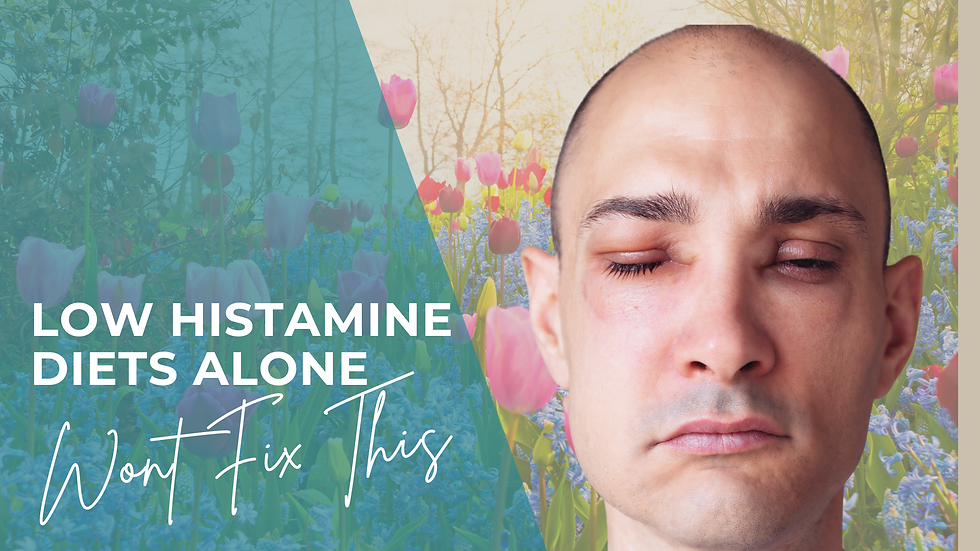Living Beyond IBS: A Five-Step Journey to a Symptom-Free End of Your Summer
- Dig Nutrition
- Jul 31, 2023
- 3 min read

The complex web of Irritable Bowel Syndrome, or IBS, a condition responsible for a wide range of gut symptoms, is what we're gently exploring today. For those who may not know, IBS describes many uncomfortable gut symptoms - from bloating and gas to cramping, abdominal pain, irregular bowel movements, and even non-digestive issues like fatigue and brain fog. It's not a one-size-fits-all label, but a shared name for a collection of symptoms that impact our quality of life in a profound way.
It's a challenge we're all too familiar with, especially for those of you who have bravely shared your personal experiences. To illustrate, let me share an anonymized response to a client intake questionnaire that so poignantly depicts the everyday reality for many living with IBS:
"One moment, I'm preparing for a relaxing trip to the beach, the next, I'm grappling with this unpredictable gut of mine. This bloating! I’m just so tired, not only from the physical discomfort but the brain fog and anxiety too. They creep in, unannounced, turning everything hazy and heavy like Im in a fog.
It's not just about the physical discomfort anymore. It's the endless planning, caution, and fear of being caught off-guard by my body. Spontaneity seems like a luxury from another lifetime. I want to enjoy my summer, not map out emergency bathroom routes or panic about how a meal out might turn into a nightmare.
I miss the old me - vibrant, carefree, and genuinely excited about life. She seems like a distant memory, replaced by a version constantly overshadowed by worry. I yearn for the freedom of simply living without this constant dread. There has to be a solution, a way to navigate these choppy waters.
Enough is enough. It's high time I reclaimed my health, my freedom, and my joy. I can't let IBS be the driving force of my life. It's time to act. I'm ready.
Jan B. 1. Tune Into Your Nervous System
The state of your nervous system is crucial when you eat. For optimal digestion, your body needs to be in the 'rest and digest' parasympathetic state, not in the 'fight or flight' sympathetic state. To achieve this, you should try checking in with your state at least once a day. A program like Neurofit can be a handy tool to guide you through this process. I have found that integrating this program into digestive wellness programs can be a game changer.
2. Revamp Your Diet
Quality is key when it comes to food. Prioritize organic meats and fats, and vegetables - especially when choosing from the Dirty Dozen - the fruits and vegetables known to contain the most pesticides. (look into ewg.org to find this list) Say goodbye to most packaged foods and, if you must consume them, aim for items with five ingredients or fewer. This will help you avoid unnecessary additives and toxins.
3. Boost Your Digestive Power
Your body needs sufficient enzymes, bile, and hydrochloric acid to break down food effectively. Sometimes a little supplemental boost can be the key to digestive transformation. If you work with a skilled practitioner, she can help you to determine exactly what enzymes, bile and or the amount of hydrochloric acid you need to optimally break down proteins so that you can use these essential building blocks and so that your undigested food doesn't become food for pathogens.
4. Identify and Remove Triggers
Factors like food sensitivities and infections could be the hidden culprits hindering your healing process. Tools such as the MRT (Mediator Release Test) and GI Map can help identify these triggers. The MRT is a blood test that highlights your body's reactions to various foods and chemicals, which might be causing inflammation. The GI Map is a comprehensive stool analysis that can reveal disruptions in your gut's microbial community, including harmful bacteria, fungi, or parasites.
5. Embrace Probiotics and Prebiotics
Feeding your gut with foods rich in probiotics (live beneficial bacteria) and prebiotics (food for these bacteria) is essential. These can be found in foods like yogurt, kefir, sauerkraut (probiotics), onions, garlic, and bananas (prebiotics). * Note: Sometimes these foods are a trigger for the symptoms of IBS. They are important, but might not be the right strategy at first. The goal is to eventually be able to eat them comfortably.
By following these five steps, you can embark on a journey towards a balanced gut, improved overall health, and enhanced quality of life. Ready to start your transformation? Book a call today, Here is a link for a brief discovery session where you can find out a little bit more. If you feel this is a good fit, we can build your personalized gut health plan together.




Comments